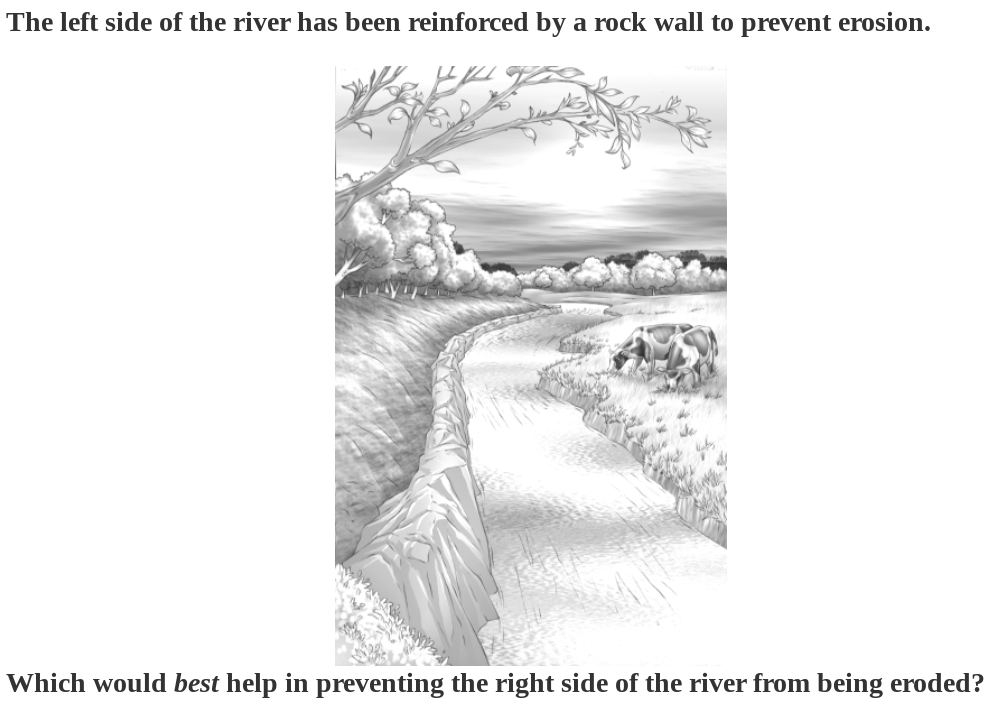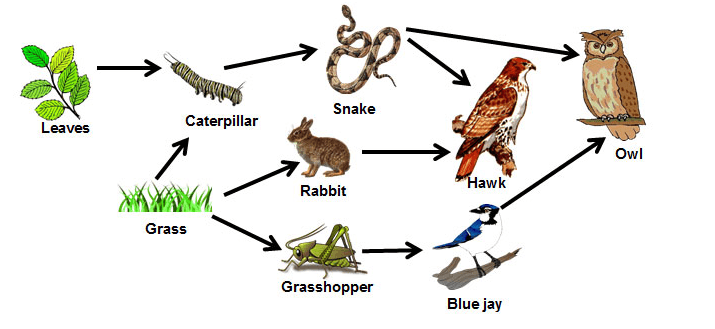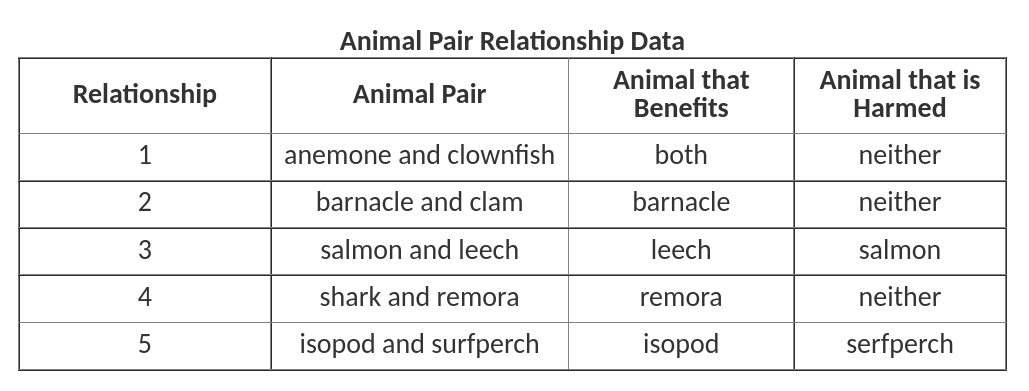Behaviors
Behaviors
Abundance & Scarcity
Biotic /Abiotic
Symbiosis & Relationships
Energy Transfer
Changing Ecosystem;
Affecting Population
Design Solutions
What are the two different types of adaptations we have learned?
Structural and Behavioral
Which abiotic resource would become available to surrounding plants in a forest if a tree fell over in a crowded forest?
Sunlight
What do we call the relationship between and Owl and a Mouse?
Predator/prey
Which way should the arrow point in a food chain / food web.
The arrow should point so the arrow head is toward the animal that is doing the eating.
Ex: Grass ----> Mouse
What kind of negative effect would deforestation create for ecosystems?
It would decrease plant and animal biodiversity.
How do humans negatively impact biodiversity?
(Students answers may vary from given answer) Humans negatively impact biodiversity in many ways, some including deforestation, invasive species, poaching, climate change, pollution etc.
Why do Peacocks dance and display their feathers?
To attract a mate
Name 3 examples of biotic factors, and 3 examples of abiotic factors.
Biotic: Living things including animals, plants, humans.
Abiotic: Nonliving parts of environment including sunlight, water, wind, rocks, soil, air, etc.
What is the difference between a community and a population?
A population is a group of the same species living in specific area.
A community is several populations of different species sharing a habitat.
This organisms uses the remains of dead organisms and recycles the nutrients back into the environment.
Decomposer
How would a drought effect a population of frogs?
The frog population would decrease because the water would dry out and they need water to survive.
What are some ways humans can protect biodiversity?
Students answers will vary
Name 3 structural adaptations & 3 behavioral adaptations
Answers will vary: Structural: Horns, thumbs, shell, gills, etc.
Behavioral: migration, hibernation, socialization, courtship, nocturnal, herding, etc.
Name the levels of organization (think about the pyramid we did in our notes, it begins with organism)
Organism, population, community, ecosystem, biome, bioshpere
A tick attaches to a dog, harming the dog. What relationship does this describe?
Parasite-host
What is the difference between a food web and a food chain?
A Food Chain is a single path of energy transfer from one organism to another while a Food Web is multiple food chains interconnected to show energy transfer through many paths and these paths can go in different directions.
Looking at this food web, if we removed the snake, what organism would be the most negatively impacted?

The Owl population would decrease because the snake is its only source of food. The hawk can still survive on rabbits, so they would not decrease.

A: Loose Soil
B: Thick Grass
C: Heavy Rainfall
D: Increased Grazing by animals
B: Thick Grass
What is a limiting factor?
How can mating be a limiting factor?
A limiting factor is anything that prevents a population from growing.
Mating can be a limiting factor if there are not enough reproducing organisms. Example: if there are less female rabbits in one year than the year before, there will be less opportunity for rabbits to mate.
 BONUS +5: Tell me what each organism in this food web should be labeled as. (Producer, primary consumer, secondary consumer, tertiary consumer)
BONUS +5: Tell me what each organism in this food web should be labeled as. (Producer, primary consumer, secondary consumer, tertiary consumer)
Producers: Leaves and grass
Primary Consumers: Caterpillar, Rabbit, Grasshopper
Secondary Consumers: Snake, Hawk, Blue Jay
Tertiary Consumers: Hawk, Owl
Fruit bats in Central America eat bananas.
Banana trees rely on bats for pollination.
If fruit bats are eliminated from the area, what happens to the banana tree?
Banana Tree's would decrease because bats would no longer be able to pollinate the crops.
Owl, sun, mouse, grass
Come up to the board and draw a food chain including all the above parts. Be sure to label your arrows in the correct direction*
Sun --> grass --> mouse --> Owl
Which of the following natural disasters is likely to cause the MOST widespread damage in a coastal ecosystem?
A: A Landslide
B: A Tornado
C: A Tsunami
D: An Earthquake
C: A Tsunami
BONUS: What is one design solution to stop the decline in biodiversity?
Student answers will vary
Name all the relationships between the organisms on this chart.

Relationship 1: Mutualism
Relationship 2 & 4: Commensalism
Relationship 3 & 5: Parasitism
Name the 4 types of ecosystem services
Provisioning/processing, regulating, cultural, & supporting services